Power Supply Units
|
| < Day Day Up > |
|
(Based on materials and with the permission of http://www.fcenter.ru, a Russianlanguage Web site.)
As a rule, when purchasing a new computer, buyers pay serious attention to the CPU clock frequency, amount of memory, hard disk size, and so on. If some attention is paid to the system unit case, it mainly relates to its appearance. The importance of purchasing a power supply unit with the case is often overlooked.
Specific Features of Power Supply Units
Not only stable operation, but also the existence of entire computer system depends on the power supply unit. Minor problems with power supply units are hard to diagnose. Persistent failures or unstable operation of the power supply unit might look like memory failures, chipset malfunctions, or OS internal errors. The PC user who experiences such problems may replace the memory, upgrade the BIOS, or reinstall device drivers, but never see a positive result. Major problems frequently cause a complete failure of the system unit. To avoid such problems, it is necessary to strictly observe the following rule: Purchase only high-quality power supply units.
Pay attention to the power declared by the manufacturer of the unit. Most power supply units with a declared power of 300 W can't handle this load. The exceptions are world-class brands, such as Fong Kai, Enermax, PowerMaster, PowerMan, HEC, and Delta Electronics products. Even these products may differ significantly from model to model; various models of power supply units from the same manufacturer can have different parameters and designs.
It is possible to obtain a lot of information by opening the case of the power supply unit. Under the hood, there is an internal device with a range of units and components. The input filter, which suppresses electric noise, is one of the most important parts of the power supply unit. Electric interference may be incoming and outgoing (i.e., from the power supply unit to the mains).
A full-featured power supply unit usually has two capacitors and is capable of protecting the computer from pulse noise and short-time blackouts. Nevertheless, the power supply unit and computer powered by it are the sources of a wide range of noise. A correctly designed filter should prevent this noise from propagating in the system and disturbing the operation of other electronic appliances, such as TV sets or other computers.
However, manufacturers of supply units often economize on throttles, and sometimes even on capacitors. Two fragments of power supply units are in Fig. 4.34. The left photo shows a high-quality filter; the right photo shows a poor-quality board, with jumpers instead of throttles.
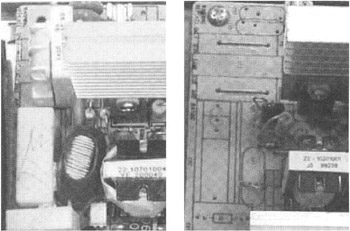
Figure 4.34: Fragment of a power supply unit with (left) and without (right) a filter
Besides the filter, many so-called no-name manufacturers economize on the capacitors and heatsinks. They also may install diodes and transistors that lack the power required for correct and smooth operation. The usage of low-powered elements intended for low currents and voltages is the most common cause of failures for power supply units. Transistors cannot withstand the load and fail.
Unfortunately, it is difficult to check the quality of the electronic components in power supply units. Therefore, it is only possible to draw conclusions from indirect indications.
The degree of voltage deviation from nominal values is the main parameter for the quality of a power supply unit. These deviations are always determined at the nominal workload.
Intel requirements for power supply units are outlined in the ATX specification. The maximum deviations of voltage for the ATX 2.01 and ATX 2.03 specifications are in Table 4.29.
| Voltage (V) | ATX 2.01 | ATX 2.03 |
|---|---|---|
| +5 | 5% = 0.25 V | 5% = 0.25 V |
| -5 | 5%=0.25 V | 10%=0.5 V |
| +12 | 5%=0.6 V | 5%=0.6 V |
| -12 | 5% = 0.6 V | 10% = 1.2 V |
| +3.3 | 4% = 0.132 V | 4% = 0.132 V |
| +5 Vsb (standby voltage) | 5% = 0.25 V | 5% = 0.25 V |
As follows from these data, the ATX 2.03 specification requirements are less stringent. However, even these are not always met by a power supply unit.
Good power supply units must have large and efficient heatsinks and fans whose rotation speed can be controlled. As a rule, the more electronic components in the power supply unit, the better the quality — and the higher the price.
The following sections provide some examples of power supply units.
Examples of Power Supply Units
Enermax EG365AX-VE
Enermax Technology is one of the world's leading manufacturers of high-quality power supply units, such as the EG365AX-VE (Fig. 4.35).
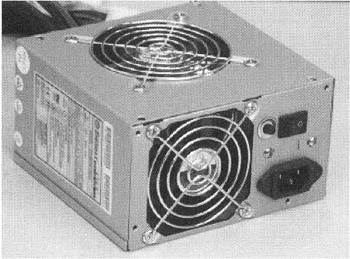
Figure 4.35: Enermax EG365AX-VE power supply unit
This power supply unit is equipped with two fans. One of them is of the standard size (80 × 80 mm) and is placed at the rear panel. Another fan (90 × 90 mm) is on the top cover.
The rotation speed of the first fan can be adjusted manually using the regulator (variable resistor) located on the rear panel. The rotation speed can be changed from 1,500 rpm to 3,500 rpm.
The second fan is controlled automatically by the thermal sensor built into the power supply unit. Besides this, a special socket for connecting to the motherboard allows the use of a built-in hardware-monitoring functionality that controls the fan rotation speed.
This power supply unit is compact and well-assembled (Fig. 4.36).
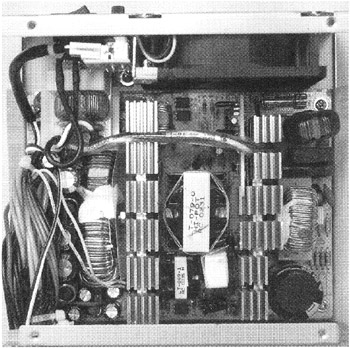
Figure 4.36: Internal structure of the Enermax EG365AX-VE power supply unit
This unit is based on the UCC3817N, UC3842BN, and TPS3510P chips.
Most power supply units use two 200 V capacitors at the input. This Enermax unit uses a single capacitor at the input (220 μF, 400 V). At each output, a pair of capacitors (2,200 μF and 3,300 μF) and a throttle have been installed.
The power supply unit is equipped with nine sockets for supplying power to peripheral devices. One of them is intended for motherboards in which processor stabilizers are supplied not only from the ATX12V socket, but also from peripheral power connector. Note that no more than two connectors are on the same cable, and the main power supply buses — 5 V, 3.3 V, and 12 V — in ATX and AUX connectors are made of thick 16AWG wire.
Tests of this unit confirmed its high workload and voltage stability.
The results of testing the EG365AX-VE are in Table 4.30.
| 12V | 5V | 3.3V | |
|---|---|---|---|
| Minimum (V) | 11.93 | 5.03 | 3.31 |
| Maximum (V) | 12.91 | 5.16 | 3.43 |
| Minimum/maximum (%) | 7.6 | 2.5 | 3.5 |
KM Korea GP-300ATX
The power supply unit in Fig. 4.37 was removed from a Sereno case.
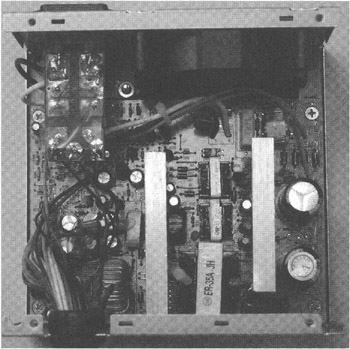
Figure 4.37: Internal structure of the KM Korea GP-300ATX power supply unit
The network filter is present. However, important components such as a heat-sink, transformer, and group stabilization throttle are very small. The 12 V channel lacks the traditional diode assembly. Instead, two discrete diodes are installed. The 5V channel — S16C40C from MOSPEC diodes are installed (40 V, 16 A current), 3.3 V channel is equipped with the SBL1040CT assembly (40 V, 10 A current). The unit based on such components can't ensure the claimed parameters.
The voltage stabilizer is based on the KA7500B chip from Fairchild Semiconductor and is an analogue to the well-known TL494 controller.
At the input, there are two capacitors (330 μF). At the output, there are two capacitors (1,000 μF) for 5 V and 3.3 V and one capacitor (1,000 μF) for 12 V. The throttle is only at the 12 V output; on the other outputs, only jumpers are installed.
The output diodes failed during testing because they could not withstand the currents specified on the power supply label. This power supply unit was unable to provide even 250 W, to speak nothing about 300 W.
Delta Electronics DPS-300TB rev. 01
This power supply unit (Fig. 4.38) is manufactured by one of the best-known power supply manufacturers — Delta Electronics.
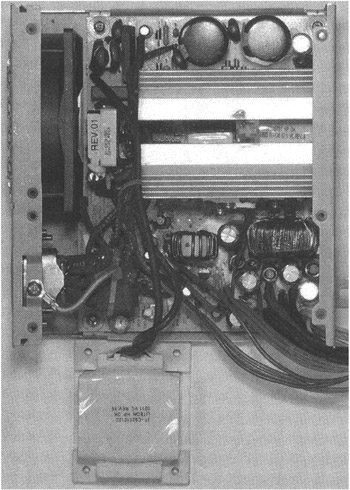
Figure 4.38: Internal structure of the Delta Electronics DPS-300TB power supply unit
The assemblage is very accurate. The components of the high-voltage circuits are insulated by a special thermo-contractable tube. All power transistors and diode assemblies are fastened by nuts and bolts onto heatsinks, on which the thermal compound is applied.
This power supply unit is equipped with a thermal regulator that controls the fan rotation speed. Immediately after power-on, the fan rotates slowly; it increases to full rotation speed only under serious workloads.
The fan in this power supply unit has low power and is intended only for cooling the power supply itself. Because of this, it is expedient to use a separate vacuum fan in the computer case. The optimal construction of this power supply unit makes it silent.
All required units, including the filters, are soldered accurately. There is a full-fledged network filter, and there are throttles on all power outputs: 5 V, 12 V, and 3.3 V. Capacitance of the input capacitors is 470 μF. At the 12 V output, there is one Chemi-Con KZE capacitor (1,200 μF); at the 5 V output, there are two Rubycon ZL capacitors (2,200 μF); and at the 3.3 V output, there are two Taicon PW capacitors (2,200 μF).
Testing confirmed the parameters (Table 4.31). At the 5 V bus, oscillations were practically unnoticeable even at the maximum workload. At the 12 V bus, the pulsation amplitude was about 15 millivolts, which is a good result.
| 12V | 5V | 3.3 V | |
|---|---|---|---|
| Minimum (V) | 11.81 | 4.94 | 3.31 |
| Maximum (V) | 12.92 | 5.15 | 3.39 |
| Minimum/maximum (%) | 8.6 | 4.1 | 2.4 |
IPower LC-B250ATX
The power supply unit supplied with the E-Star model 8870 "Extra" case is shown in Fig. 4.39.

Figure 4.39: Internal structure of the IPower LC-B250ATX power supply unit
There is no network filter here — only jumpers, instead of throttles. Half of the filtering capacitors at the output are missing. Two capacitors usually are installed on each bus before and after the throttles. In this unit, one of the capacitors has disappeared, along with the throttle. The capacitance of the capacitors of the high-voltage rectifier is 330 μF; the output capacitors are 1,000 μF for each bus.
This is not all. This power supply unit lacks even insulating plastic lining between the case and the high-voltage part of the circuit. Because of this, the assembling quality is unsatisfactory.
Five output connectors are connected by short 20AWG wires. There is no thermal regulator.
Testing showed unstable output voltages — for example, 15% for 12 V and 7% for 5 V.
These examples should illustrate the importance of carefully choosing a high-quality power supply unit.
|
| < Day Day Up > |
|
EAN: 2147483647
Pages: 111
- RIPv2 PE-CE Routing Overview, Configuration, and Verification
- L2 VPN-Any to Any Interworking
- MPLS QoS Implementation
- Configuration and Implementation of MPLS QoS in Uniform Mode and Short Pipe Mode Operation
- Case Study 4: Implementing Layer 3 VPNs over Layer 2 VPN Topologies and Providing L2 VPN Redundancy